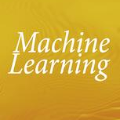In multiple-choice exams, students select one answer from among typically four choices and can explain why they made that particular choice. Students are good at understanding natural language questions and based on their domain knowledge can easily infer the question's answer by 'connecting the dots' across various pertinent facts. Considering automated reasoning for elementary science question answering, we address the novel task of generating explanations for answers from human-authored facts. For this, we examine the practically scalable framework of feature-rich support vector machines leveraging domain-targeted, hand-crafted features. Explanations are created from a human-annotated set of nearly 5,000 candidate facts in the WorldTree corpus. Our aim is to obtain better matches for valid facts of an explanation for the correct answer of a question over the available fact candidates. To this end, our features offer a comprehensive linguistic and semantic unification paradigm. The machine learning problem is the preference ordering of facts, for which we test pointwise regression versus pairwise learning-to-rank. Our contributions are: (1) a case study in which two preference ordering approaches are systematically compared; (2) it is a practically competent approach that can outperform some variants of BERT-based reranking models; and (3) the human-engineered features make it an interpretable machine learning model for the task.
翻译:在多种选择的考试中,学生从典型的四种选择中选择一个答案,并可以解释他们为什么做出这一选择。学生们擅长理解自然语言问题,并且根据他们的领域知识可以很容易地通过“将点连接到各个相关事实”来推断问题的答案。考虑到基础科学问题解答的自动化推理,我们处理的是从人造事实中解答答案的新任务。在这方面,我们研究利用域目标、手工制作的功能,利用地貌丰富支持矢量机器的实际可扩展框架。解释产生于世界图文集中一套近5 000个候选事实的附加说明的一套人类解释。我们的目标是通过将问题正确解答的正确事实与现有事实候选人的正确答案更好地匹配。为此,我们的特征提供了一种全面的语言和语义统一模式。机器学习问题是事实的偏好排序,我们测试的是这些事实的回归与对称学习顺序。我们的贡献是:(1)案例研究,其中系统地比较了两种偏好的方法;(2)我们的目的是为了获得一个有效的方法,可以超越某个模型的模型,从而超越了某种机器变式的模型。



